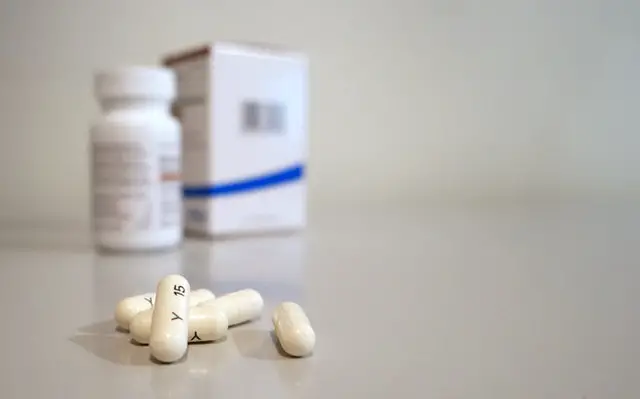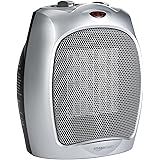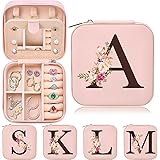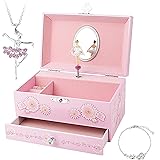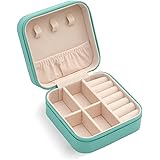Some medication needs to be kept cool while traveling. After all, you wouldn’t want to take the risk of taking the wrong dose due to low temperatures, right? So, how to keep your medication cool while traveling?
With this in mind, there are ways to make sure that your medication does not get damaged by the heat or any other factors you might encounter during your trip.
This blog will let you know about some ways in which you can keep your medication cool while traveling.
Table of Contents
Know what TSA says
The Transportation Security Administration has strict rules when it comes to flying with liquids, gels, and aerosols in your carry-on luggage.
To make sure that you won’t be in trouble if you’re on a trip, here are TSA’s guidelines for flying with liquid substances. The 3-1-1 rule: 3.4 ounce (100ml) bottle or less (by volume); 1 quart-sized, clear, plastic, zip-top bag, 1 bag per passenger placed in screening bin.
TSA agents may need to open your bags for additional screening.
But, you should know that the 3.4 ounce rule for taking liquids is not applicable when it comes to medicines.
You can read this basic guideline from the TSA website to know more. You will find another page about the general guideline for traveling in a medical condition helpful to know more.
Make sure that you are aware of any restrictions that might apply when traveling with a particular prescription. Some medications, such as liquids and gels, may be subject to additional screening at security checkpoints.
To help TSA officers get a clear view of what’s inside your bag, pack all medications in their original containers and bring them to a clear plastic bag.
If you have more than one container, pack them separately, so they aren’t confused for multiple bottles or other prohibited items.
Get to know about how your prescribed medicine needs to be stored
A pharmacist will be able to tell you whether your prescription should be kept in a refrigerator or freezer. Most medications should be stored at room temperature unless otherwise instructed.
To determine if it needs refrigeration, check with your pharmacist. The best way to keep medicine cool while traveling is by packing it into an insulated bag and keeping ice packs close by.
If it is not mandatory, then you will not have to get the hassle of looking for a refrigerator on the plane. It will be enough then to keep the medicine in a cooler place once you reach your destination. This is definitely subject to the length of your flight, of course.
If it’s just a few hours, you should be fine without refrigeration. If it’s longer than that, however, check with your pharmacist or doctor before leaving home and follow their instructions on how to store your medications properly.
The use of ice packs is also a good idea, as they will make sure that your medicine stays cool throughout the trip. Make sure you get ones that are insulated, so they don’t freeze completely solid during transit.
Put them inside an insulated bag if possible for added protection from outside temperatures.
So these are some steps that you can follow to store your medicine while traveling.
Pack medications in original packaging
If possible, pack medications in their original packaging. When packing medications in a Ziploc bag or container, avoid using rubber bands or other plastic wraps to close bags.
These materials cause condensation, which can reduce the effectiveness of some medications.
Check the expiration dates of your medicine
It’s important that you travel with medicine that hasn’t expired yet.
Check the expiration date when you pack and make sure it doesn’t exceed your trip duration. Consider keeping extra doses on hand for emergencies.
Freeze medications if necessary
If you are traveling somewhere hot, consider freezing liquid medicines into ice cubes. This will help them stay cooler longer than they would at room temperature.
Don’t put drugs in checked luggage
For obvious reasons, don’t put any medicines in your checked luggage, you won’t be able to access them during flight delays or baggage mishaps.
Put medications in a carry-on bag
Pack all of your medications and supplements in a carry-on bag with an insulated sleeve that can protect against heat and cold.
If you are taking prescription medicine, make sure you have enough for your entire trip. If possible, take extra doses with you as a backup.
Keep your medicines in a plastic bag
Keeping medications in a plastic bag will insulate them from temperature changes. If you don’t have a plastic bag on hand, wrap them in clothing or put them in a pillowcase for extra insulation.
You can also get plastic bags with gel packs already inserted. Just be sure to check that they haven’t expired. It’s never safe to use outdated medicine.
If you need help keeping track of when things expire, consider downloading an app like Expiration Reminder.
This free app lets you enter all of your medicines and then alerts you when they are about to expire. It even includes dosage reminders so that you never accidentally take too much or too little of any given drug.
The next time you travel somewhere hot or cold, whether it’s for business or pleasure, take these precautions to ensure that your prescription drugs stay at a safe temperature during transport.
Put them in the center of your luggage
If you’re taking medicine, you should put it in a small resealable bag or container and place it at the center of your luggage.
This will help prevent it from getting too hot on either side of your trip. If you’re going by car, make sure that any medicine doesn’t come into contact with extreme cold or heat. If you have to travel by airplane, make sure that it comes in an insulated, secure pouch.
You can also ask your doctor for advice about how to best store your medications.
For example, if you’re taking a liquid form of medication, make sure that it doesn’t freeze or become too hot.
If you have any questions or concerns about how to properly travel with your medications, speak with a professional at your local pharmacy before traveling.
While on vacation, don’t forget that many foreign pharmacies may not carry all of your prescriptions. If you are planning on staying in another country for an extended period of time, it is a good idea to bring enough medicine and refills so that you can fill them as needed in that country.
When you are going to be gone for less than three months, make sure that any medications will last until your return home. If they won’t, check with a doctor or pharmacist about how long they should last and how much you should take before leaving.
Bring an ice pack
This is probably obvious, but it’s worth pointing out anyway.
You should always bring an ice pack with you if you’re traveling, especially if you’re going abroad.
If you get any prescription meds, either have them shipped ahead of time or make sure you can carry them on with your extra water bottles and snacks. Your body will thank you later.
Also, don’t forget to put your name on all your stuff! Nobody wants a trip ruined by accidentally leaving their expensive prescription medicine behind at a hotel.
Book flights that are less than 6 hours
The temperature of cabin air is regulated by air-conditioning systems.
This can cause a lot of problems if you’re flying long distances, especially during hot summer months. To avoid issues with getting rid of body heat when flying in hot weather, opt for flights that are less than six hours long.
In general, a flight should last no longer than 12 hours from door to door if you want to be able to fly comfortably during warm weather. After all, it’s hard to sleep on a plane when you’re hot and uncomfortable.
Keep in mind that certain airlines may have better air-conditioning systems than others. If possible, choose an airline with an excellent reputation for cabin air quality before booking your ticket.
If you’re not sure how long a flight will last from door to door, ask a representative at your local travel agency or airport.
They should be able to give you a general idea of how long each flight takes from takeoff to landing, as well as whether or not there are any layovers along the way.
Book flights during non-peak hours
Most people tend to book flights during peak hours, for instance, Friday afternoon through Sunday evening.
This is especially true if they’re traveling on holidays or special occasions. To avoid crowds, it might be worth considering flying on less popular days instead.
For example, if you want to fly on a holiday weekend but don’t want to deal with large crowds, consider flying out late Wednesday night/early Thursday morning instead of Friday afternoon/evening.
Another option is to fly midweek instead of on weekends. Since most people work full time, weekday flights tend to be less crowded than weekend ones.
Take shorter layovers
If you’re doing a long layover, think about where you can store your medication that’s located in your carry-on bag.
Some airports provide free refrigerators at security checkpoints, if there are none available, ask an airport employee whether they have access to a refrigerator or cooler.
You might also want to ask them how they would transport their own medications. They may be able to offer some advice.
If it’s not possible to store your medicine at security, try storing it somewhere else in the airport and picking it up before boarding.
Or purchase a small ice pack for extra precaution. The last thing you want is for your meds to get warm and ineffective!
Buy cold packs at your destination
If you are going on a trip, chances are you’ll have to bring medications that should be kept in certain conditions.
To make sure that your medication doesn’t lose its efficiency and stays safe during travel, it is best if you buy some cold packs at your destination.
This will make sure that no matter how hot or long your trip maybe, you won’t need to worry about your health condition worsening.
However, there are also several other ways of keeping medicines cool without having to buy cold packs at your destination.
For example, you can simply put them in an insulated bag or wrap them with wet cloths. You can also put them in a sealed plastic bag with ice cubes inside before sealing them completely so that they don’t get too moist from melting ice cubes.
Another way would be to purchase an insulated lunch box that keeps food warm and can also keep medicines cool as well.
The point here is that you shouldn’t take any risks when it comes to your health. So make sure that you always carry around some cold packs just in case!
Take extra precautions with liquid medications
Keep liquid medications in a thermos, and never put them in an overhead compartment or any place that’s exposed to extreme temperatures.
Liquid medications can be damaged by freezing, especially if they contain sugar solutions. They can also lose potency if they’re not stored at or below room temperature.
A good rule of thumb is to bring two sets of pills with you and make sure they’re double-sealed, so you don’t accidentally leave one behind.
If you take regular medications on a daily basis, consider getting yourself a prescription for extra refills before leaving home.
This way, if anything happens to your luggage en route, you won’t have to worry about finding replacements once you arrive at your destination.
And if it’s possible, call ahead to see what kind of supplies might be available where you’re going.
For example, many large hospitals carry certain over-the-counter drugs that are hard to find elsewhere.
It’s always best to avoid taking medications during air travel, but if you absolutely must, ask your doctor how long you should wait after taking something before flying.
Some medicines should be taken several hours beforehand, others shouldn’t be taken within 24 hours of flying.
The most important thing is to do some research ahead of time and know exactly what you need when it comes time to board.
Best ways to pack medicine in travel
There are two main types of travel: where you check a bag with your luggage, and where you carry on your bag.
In general, it is better not to store medicine in your checked luggage.
Most airlines will keep bags on their luggage carousel for 24-48 hours at least, meaning they could potentially be exposed to extreme heat or cold as they wait.
If temperatures in storage areas fluctuate too much, even if only slightly, some medicines can lose their potency.
So, how do you make sure your medication stays cool? The best way is to purchase a small cooler designed specifically for transporting medication; most are inexpensive and effective.
However, they aren’t always practical when traveling by air due to size restrictions.
Here are other tips for keeping medicine cool while traveling.
Ice packs
Ice packs are easy to transport, but they don’t last long. Be sure to use them in combination with another method listed above.
They can also leak into your suitcase if damaged or punctured, so take care when packing them around other items.
Gel packs
Gel packs work similarly to ice packs, but tend to be more durable and less likely to leak into your suitcase.
Insulated Containers
Insulated containers are generally large enough to hold several bottles of liquid medicine.
Medicine Boxes/Tray
Medicine boxes often come with dividers and compartments, making them ideal for storing multiple medications together.
Freezer Bags
Freezer bags can be used for dry goods like vitamins and supplements, but should never be used to store liquid medicine.
Pill Organizers
Pill organizers are similar to pillboxes except they are made from plastic instead of metal or wood.
Plastic Bottles
Plastic bottles are convenient because they can be reused, but may not protect against changes in temperature.
Ziploc Bags
Ziploc bags offer good protection against moisture, which means they’re great for preventing water damage to tablets and capsules.
Glass Bottles
Glass offers excellent protection against moisture, which makes it perfect for protecting liquid medicine.
Disposable Pouches
Disposable pouches are useful for protecting individual doses of medicine.
Prescription Bottle Caps
Prescription bottle caps, like those found on cough syrup, can be used to protect pills and capsules.
Metal Tin
Metal tins are airtight and can be used to store liquid medicine.
Few tips for traveling with a medicine box
When you travel with a medicine box, it’s important to consider how hot or cold conditions might be.
Keeping your medications stable in varying temperatures can be a challenge, but here are some tips for keeping them cool while traveling.
Easily portable medication by physicians advice
Choose medication that is easy to store and doesn’t require refrigeration. For example, if you need an antibiotic for an infection, look for one that doesn’t need to be kept refrigerated and only needs to be stored at room temperature when not being used.
Store the medicines separately
Don’t pack too many medicines together in one place. Keep each type of medicine separate, so they don’t get mixed up and accidentally taken by mistake.
Add labels on the bottle
Make sure all your bottles have their labels facing outwards, so they can easily be read by medical staff in case of emergency.
Packing medicine in a cooler bag
Pack your medicine box into a cooler bag with ice packs or frozen water bottles before travelling.
Take extra medicine
Consider taking extra medications just in case something happens during the trip that prevents you from getting home quickly.
Ask beforehand
If you’re going on a long flight, ask about storing your medications on board, most airlines will happily oblige as long as they know about it beforehand and there isn’t anything unusual about them.
Check if the medicine is available at your destination
If you’re planning on staying somewhere new for more than a few days, check whether local pharmacies stock any of your regular medication. This way, if you run out unexpectedly, you won’t have to worry about paying high prices at tourist outlets or finding somewhere that sells what you need.
Use specialized pillbox for segregation of medicines
Use specialized pillboxes or cases to help organize your pills and make sure you take them at appropriate times throughout your trip.
Bring your prescription
Always bring along a list of prescription drugs and contact information for your doctor/pharmacist/health insurance provider etc, just in case something goes wrong during your travels, and you need urgent medical attention abroad.
What not to do
You don’t want to put your medication in a plastic baggie or a Ziploc-style container, because both of these materials tend to trap heat. If you keep them in something like that, they could get too hot and melt.
An even worse idea is putting your medications inside of a sealed zippered plastic bag, which will keep in more heat than an unzipped bag would.
The best thing to do is find a cooler with an insulated lining, the kind used for keeping food cold, and fill it with ice packs or frozen water bottles.
This way, your medications will stay cool without being exposed to any sort of potentially harmful material.
You can also add a few wet paper towels on top of your meds if you need to, just make sure not to let them sit there for too long, as wet paper towels are prone to molding.
A couple of hours should be fine.
When you arrive at your destination, take out all of your meds and place them in a refrigerator, if one is available until you need to take them again.
Don’t try to refreeze anything, though.
Once something has thawed, it shouldn’t be refrozen.
And never leave your medications in a car overnight, no matter how well you think you might have shielded them from the sun.
Even when parked in shaded areas, cars can still reach dangerously high temperatures.
Make sure the temperature remains stable in plane
Make sure that you pack all of your medications with ice packs or cold packs so that you can keep them as cool as possible.
This is especially important if you’re traveling internationally, where extreme temperatures are more common.
The more time your medication spends at a temperature it’s not used to, and in an environment of extreme heat, extreme cold, and so on, can cause it to lose potency.
You may want to consider packing some of your medication into a ziplock bag before placing it into another bag for travel.
You should also make sure that you bring along any documentation related to your prescriptions. If you’re traveling abroad, make sure you have a letter from your doctor stating what medications you need and why.
And finally, don’t forget to take your medication!
It might be tempting to put off taking it until you get home, especially if you feel fine, but don’t do it.
Taking your medicine regularly is one of the best ways to ensure its efficacy and prevent illness or injury while traveling.
If you’re having trouble remembering to take your meds, try putting them in pillboxes or setting up alarms on your phone.
There are even apps available that remind you when it’s time to take a dose, making it easy to stay healthy while traveling.
Talking to airline staff
Asking a flight attendant for an ice pack can’t hurt.
Not only is it polite, but it will also help you quickly figure out if ice packs are available on your flight.
If they aren’t, try talking to your gate agent, you never know!
I’ve seen gate agents give out their own personal ice packs when asked. It might be something worth requesting before you get on board.
Ice packs are also sold at most airport stores and pharmacies. But please note that even some of these cold packs don’t keep medications cool enough for long periods of time.
And there are many sizes and shapes of ice packs, so ask around first. You want one that fits inside your carry-on bag and has a flexible exterior, so it doesn’t break or puncture easily.
Frequently asked questions (FAQs)
Can sunlight damage medication?
Some medicines contain elements that get activated when it gets in touch with the sun especially the ultraviolet radiation of it, then it gets activated. It can damage the effectiveness of the medicine.
How do you travel with over-the-counter medicine?
There is no extra precaution regarding OTC medicine, you can bring it with your carry-on bag.
Wrapping things up
If you have a medical condition, it’s especially important to stay aware of your body temperature and take all the medicines. So, how to keep your medication cool while traveling? You must have got some idea about it by now.
When traveling, be sure to pack an ice or gel pack with your medication so that if it becomes overheated, it will remain cold. Alternatively, look for an insulated container that can keep your medication cool while being transported. By following these precautions and always making sure your medications are cooled off properly before use, you’ll be able to enjoy them safely during travel.

